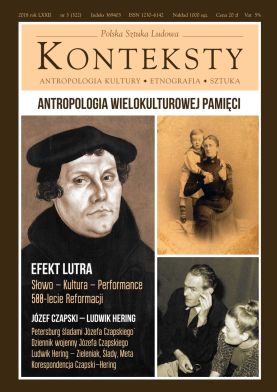Portret artysty z czasów kryzysu. O Matthiasie Grünewaldzie i operze „Mathis der Maler” Paula Hindemitha
Portrait of an Artist from the Time of a Crisis. On Matthias Grünewald and the Opera “Mathis der Maler” by Paul Hindemith
Author(s): Dorota KozińskaSubject(s): History, Fine Arts / Performing Arts, Theology and Religion
Published by: Instytut Sztuki Polskiej Akademii Nauk
Keywords: Matthias Grünewald;Paul Hindemith;Protestantism;
Summary/Abstract: Matthias Grünewald, author of the Isenheim altar, one of the greatest masterpieces of Gothic-Renaissance art, is regarded as a precursor of Modernistic Expressionism. The Grünewald legend was revived at the end of the nineteenth century and flourished all the way to the turn of the 1920s when the altar drew the attention of luminaries of New Reality (Neue Sachlichkeit). It also attracted the interest of Paul Hindemith, leader of the young generation of the German avant-garde. His work on the opera Mathis der Maler, referring to the life and time of the German painter, was pursued in a similarly turbulent atmosphere and produced equally dramatic consequences as Grünewald’s years-long efforts connected with the creation of the altar in the Antonine church. Both authors worked at a time of a crisis: Grünewald in a period of the reforms launched by Martin Luther and the bloody events of the Peasant War, and Hindemith in the wake of the fall of the Weimar Republic and under the growing pressure of the cultural policy of the Third Reich. The author of this sketch endeavoured to explain why Hindemith chose precisely Matthias Grünewald, and the manner in which he conceived his opera as a manifesto of non-conformism and the freedom of an artist - predominantly one who is doomed to function in an extremely unfavourable socio-political context.
Journal: Konteksty
- Issue Year: 322/2018
- Issue No: 3
- Page Range: 88-90
- Page Count: 3
- Language: Polish
- Content File-PDF

